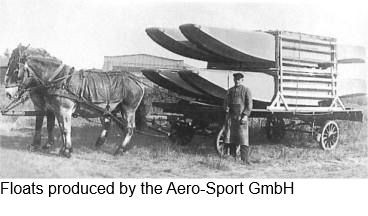Walter Bachmann owned the Aero-Sport GmbH at Warnemünde. this company built the old design LVG B III. In his flyingschool naval flyers trained before 1932.
In 1933/34 the air force, later the Kriegsmarine took over the airfield in Warnemünde. Walther Bachmann found in Ribnitz with the nearby airfield Pütnitz good conditions for the construction and testing of land and sea aircraft and moved the "Aero-Sport GmbH" from Warnemünde to Ribnitz. Meanwhile, he had earned a certain wealth and had possession in Körkwitz, Neuhaus and Ahrenshoop.
At some point at this time, the company was renamed "Riebnitz repair shop", this probably happened for reasons of secrecy.
From 1937 the company was renamed "Walther-Bachmann-Flugzeugbau KG". Like the aircraft manufacturers Arado and Heinkel in Rostock, Bachmann in Ribnitz was generously sponsored by the National Socialists. The employment and earning opportunities were very good, so that the city of Ribnitz experienced an economic rise with "Bachmann" in the 1930s.
Initially, repairs were primarily made to seaplanes ( He 42, He 59). Later, the plant also acted as a supplier to other aircraft plants.For Heinkel and the Aradowerke were. wings, controls and cockpitpanels produced under license It was the "Reparaturstammbetrieb" for the standard bomber of the German Luftwaffe Heinkel He 111. 1945 jet bombers of the type Arado Ar 234 were repaired.
The Walther-Bachmann-Flugzeugwerke Ribnitz opened a branch office in Barth in 1938, where they manufactured subassemblies and weapon parts for equipping the Wehrmacht. In 1942, the company employed 2,350 people.
With the occupation of the city Ribnitz at the end of the Second World War by the Red Army on 1 May 1945, began the dismantling of undestroyed plants. All buildings except the design office and administration building were blown up by the enemy. Walther Bachmann's attempt to get the work back in order to build a civilian production failed. On April 17, 1948, the criminal expropriation was confirmed.

